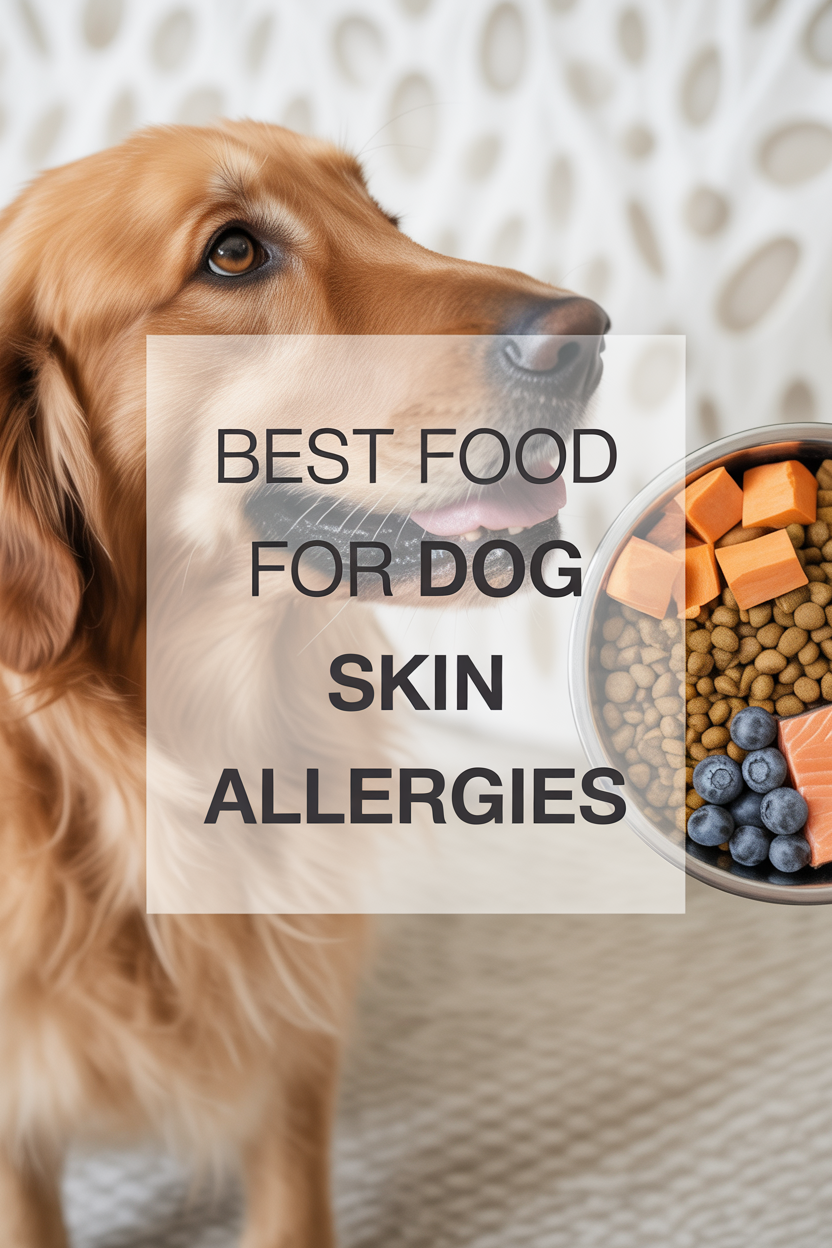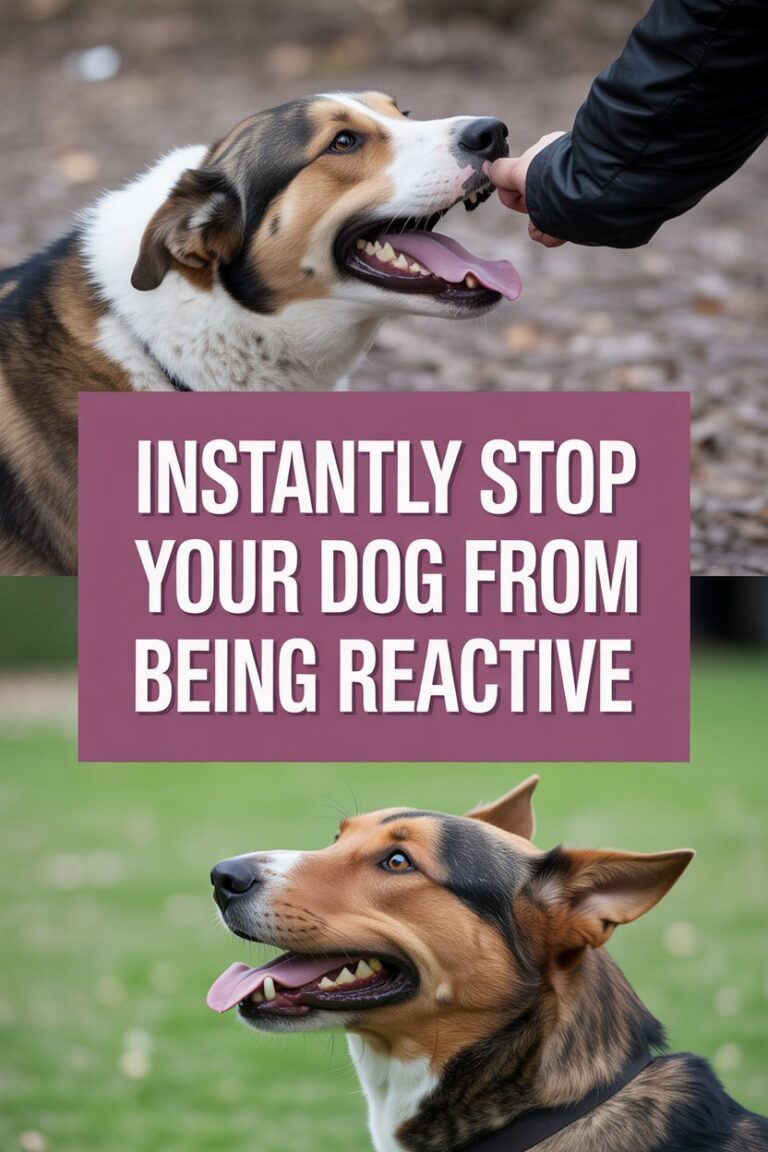Dog Food for Skin Allergies: The Best Options for Your Pup’s Comfort

Dealing with skin allergies in dogs is heartbreaking. Seeing your dog constantly scratch, lick, or bite at their skin can be frustrating, not just for them, but for you as well. If your dog is dealing with allergies, one of the first things to consider is their diet. The right dog food for skin allergies can help reduce inflammation, improve skin health, and bring relief.
I’ve seen the positive effects that a change in diet can have on a dog’s skin. When my dog started showing signs of allergies, I worked with my vet to find the right food, and I couldn’t believe the difference. So let’s dive into what you need to know about choosing dog food for skin allergies and how it can improve your dog’s life.
1. Understand What Triggers Skin Allergies in Dogs
Before we dive into dog food for skin allergies, it’s important to understand what might be causing your dog’s discomfort.
Common allergens for dogs include:
- Grains (like wheat or corn)
- Dairy
- Beef or chicken (in some cases)
- Artificial additives or preservatives
- Environmental factors (pollen, dust mites)
Food allergies can often manifest as itchy skin, hot spots, or rashes, so addressing the right diet can be a game-changer.

2. Choose Hypoallergenic Dog Food
Hypoallergenic dog food is designed specifically for dogs with allergies. These formulas often include limited ingredients that are less likely to trigger an allergic reaction. Some great options for dog food for skin allergies are:
- Single-source protein (duck, lamb, or fish)
- Easily digestible carbohydrates (sweet potatoes, rice)
- No artificial additives or preservatives
These foods minimize the number of allergens in your dog’s diet and focus on their sensitive skin needs.
3. Look for Omega-3 Fatty Acids
Omega-3 fatty acids are vital for healthy skin and coat. They help reduce inflammation and soothe itchy, irritated skin. Look for foods rich in fish oils (salmon or sardines) or flaxseed.
💡 Tip: Adding a supplement like fish oil to your dog’s diet can further enhance the health benefits for their skin.
4. Grain-Free Options for Sensitive Dogs
If your dog has grain allergies or sensitivities, switching to grain-free food might be a good option. Grains like wheat, corn, and soy are common allergens for many dogs and can contribute to skin problems.
- Look for food with alternative grains like quinoa or oats.
- Choose protein-rich, meat-based formulas that don’t include corn or wheat.
Grain-free dog food is often an ideal solution for pups with skin allergies.
5. Natural Ingredients for Skin Health
The best dog food for skin allergies doesn’t just focus on protein and carbs — it also includes natural ingredients that nourish and support skin health. Some of these include:
- Coconut oil (for its anti-inflammatory properties)
- Aloe vera (soothing and healing)
- Chia seeds (rich in fiber and omega fatty acids)
- Vitamin E (an antioxidant that supports skin health)
Look for these natural ingredients to boost your dog’s skin care from the inside out.

6. Avoid Artificial Colors, Flavors, and Preservatives
Additives like artificial colors and flavors can often trigger allergic reactions in dogs, leading to more skin problems. Always choose natural, high-quality ingredients.
- Avoid: Artificial preservatives like BHA/BHT or ethoxyquin.
- Look for: Natural preservatives like mixed tocopherols (vitamin E).
7. Try Limited Ingredient Diets (LID)
A Limited Ingredient Diet (LID) focuses on fewer, high-quality ingredients to reduce potential allergens. These diets are often formulated with:
- One protein source (e.g., turkey, duck, or venison)
- One carbohydrate (such as peas or sweet potatoes)
LID can help identify which ingredient may be causing the allergy or skin issue.
8. Work with Your Vet to Find the Best Option
Every dog is unique, and what works for one dog may not work for another. It’s important to consult with your vet to determine the best dog food for skin allergies.
- Consider a food trial: Eliminate certain ingredients and slowly introduce others to see what works best for your dog.
- Monitor progress: Keep track of how your dog’s skin responds after dietary changes.

9. Hydration Is Key
Don’t forget that hydration plays a major role in skin health. Make sure your dog always has access to clean, fresh water. Hydrated skin is less likely to crack and itch.
10. Be Patient – Results Take Time
Switching dog food and seeing noticeable results with skin allergies takes time. It may take 4-6 weeks to see improvement, so be patient and consistent with your dog’s new diet.
Final Thoughts
Choosing the best dog food for skin allergies is an important step in helping your dog live a more comfortable, itch-free life. By selecting food that’s gentle on their stomach, high in omega-3s, and free of allergens, you’re not only caring for their skin but for their overall health.
Remember, it’s not just about finding the right food — it’s about creating a healthier, happier life for your dog. And when they’re no longer scratching, licking, or uncomfortable, you’ll know it was all worth it. 🐶❤️






